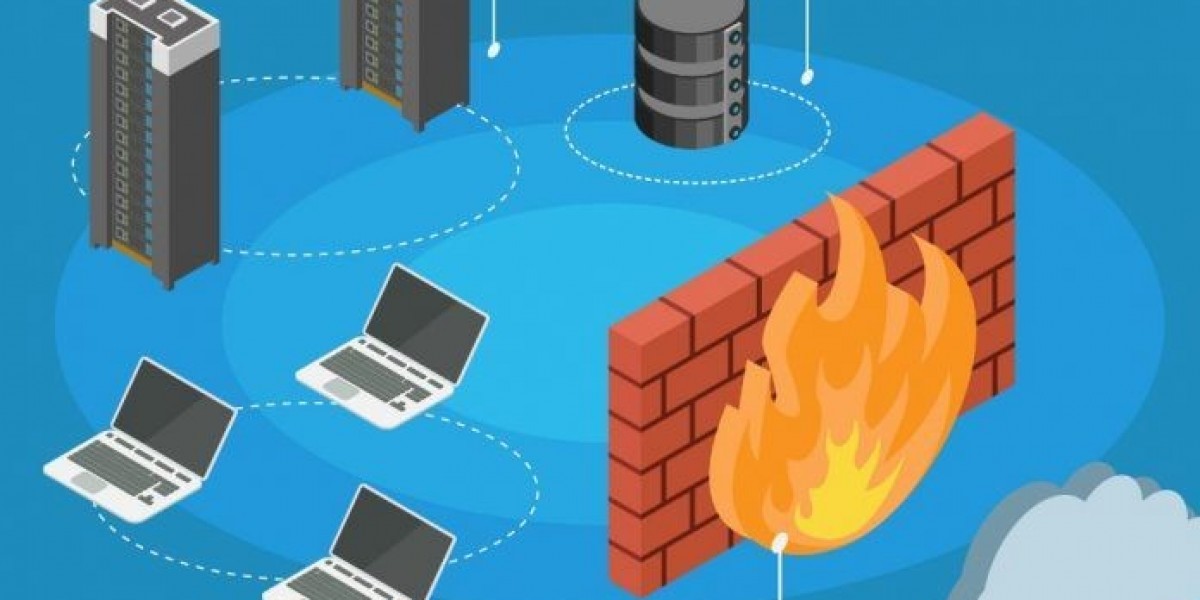The traditional network perimeter has all but dissolved. With applications in the cloud and employees accessing data from anywhere, the enterprise firewall has been forced to adapt or become irrelevant. In response, it has undergone a profound metamorphosis, transforming from a static hardware appliance at the network's edge into a dynamic, policy-driven service that follows data and users across cloud environments and home offices. This shift is redefining the very concept of a security boundary, making the modern firewall an essential enabler of secure digital transformation.
This fundamental shift in purpose is driving massive investment and technological advancement. According to Straits Research, the global enterprise firewall landscape was valued at USD 13.45 billion in 2024 and is expected to grow from USD 14.93 billion in 2025 to reach USD 34.43 billion by 2033, growing at a CAGR of 11.01% during the forecast period (2025-2033). This growth is a direct response to the complex security challenges posed by cloud migration, the Internet of Things (IoT), and the hybrid work model.
Global Innovations and Competitive Analysis: Securing the Distributed Enterprise
Vendors are competing on their ability to provide unified security across on-premises data centers, multiple public clouds, and remote user connections.
Zscaler (USA): A pioneer in the cloud-native space, Zscaler has championed the Zero Trust model with its Zscaler Internet Access (ZIA) platform. Rather than a traditional firewall, it operates as a distributed cloud security proxy. A recent update enhances its data loss prevention (DLP) capabilities, allowing it to consistently enforce policies and inspect encrypted traffic for sensitive data leaving the corporate environment, regardless of a user's physical location.
Palo Alto Networks (USA): Beyond hardware, Palo Alto's Prisma Access is its flagship SASE offering. A recent strategic announcement detailed new integrations with Amazon Web Services (AWS), Microsoft Azure, and Google Cloud firewalls. This provides a unified management console for securing traffic between workloads across all major cloud platforms, addressing the critical challenge of multi-cloud security complexity.
Fortinet (USA): Fortinet is promoting its Security Fabric philosophy. A key recent update from the USA is the expansion of its FortiGate Virtual Firewall capabilities for public clouds. These are optimized for auto-scaling and pay-as-you-go consumption models, allowing enterprises to seamlessly extend their security policies into AWS and Azure with consistent features and centralized management.
Barracuda Networks (USA): Often targeting the mid-market, Barracuda has made strides with its Cloud-Generation Firewalls. Their recent focus has been on providing all-in-one, easy-to-deploy appliances that include advanced threat protection, SD-WAN, and zero-trust network access (ZTNA) capabilities in a single box, simplifying security for organizations with limited IT staff.
Forcepoint (USA): Specializing in data-centric security, Forcepoint's recent strategy update emphasizes its Dynamic Data Protection technology. Their firewalls are designed to understand context—who is accessing what data and from where—and can dynamically adjust security controls. For example, it can block the download of a sensitive file if a user is on an untrusted home network, but allow it if they are on the secure corporate LAN.
Emerging Trends: The Context-Aware, Data-Centric Future
Three key trends are defining the next chapter of firewall evolution:
Zero Trust Network Access (ZTNA): The principle of "never trust, always verify" is being baked directly into firewall services. Firewalls now grant access to specific applications rather than entire network segments, dramatically reducing the attack surface and moving beyond the outdated "castle-and-moat" model.
IoT and OT Security: As operational technology (OT) networks in manufacturing and critical infrastructure connect to IT networks, firewalls are being adapted with specialized protocols and deep packet inspection to understand and secure unique industrial control system (ICS) traffic, preventing catastrophic physical disruptions.
Consolidation and Platformization: Enterprises are desperate to reduce the number of security vendors they manage. Firewall providers are responding by bundling more capabilities—like SD-WAN, CASB, and endpoint protection—into a single platform, offering a consolidated security architecture.
Recent News and Developments
A recent Gartner Magic Quadrant report highlighted the continued dominance of Palo Alto Networks, Fortinet, and Cisco, but also noted the rapid ascent of Zscaler in the SASE category. In a related development, the UK's National Cyber Security Centre (NCSC) issued new guidelines strongly recommending the adoption of a zero-trust architecture, a move that directly benefits cloud-delivered firewall and security service edge providers.
In Summary: The Architecture of Secure Access
The enterprise firewall has successfully transitioned from a perimeter-based hardware appliance to a versatile, cloud-delivered service that secures access to applications and data from any location.







